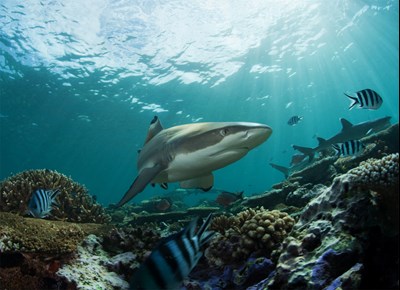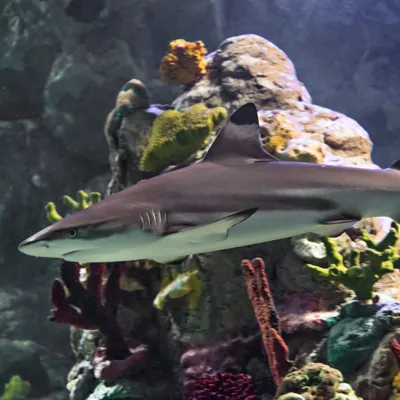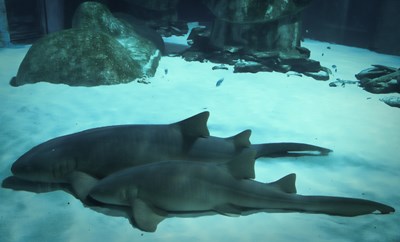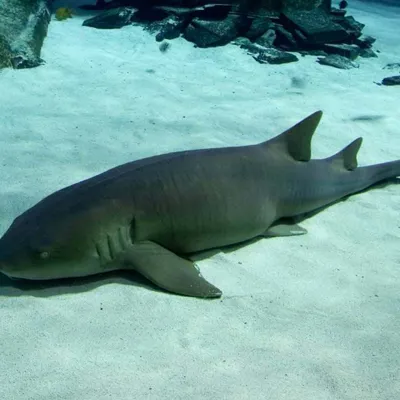- SEA LIFE, Shark Lagoon
Sharks have lived in our oceans for more than 420 million years... that makes them older than Dinosaurs!
Their brains have evolved to become more intelligent and devoted to their senses – mainly their ability to smell. There are over 500 species of shark in our oceans and you’ll meet different species when you explore our Ocean Tunnel!
- SEA LIFE Trust is actively working with the Shark Trust to campaign against unsustainable shark fishing in EU waters. SEA LIFE is also proud to be coordinating the European Black Tip Reef Shark breeding programme.
Black Tip Reef Shark
We love our Black Tip Reef Sharks, they’re jaw-some! And with the prominent black markings on their fins they are easy to spot.
Found on the tropical coral reefs of the Indian and Pacific Oceans, Blacktip Reef Sharks prefer shallow, inshore waters.


These sharks are viviparous
- They give birth to live young rather than laying eggs. In the first few years of their life young Black Tip Reef Sharks often fall prey to larger fish such as groupers, Grey Reef Sharks, Tiger Sharks or even bigger Blacktip Reef Sharks. Juvenile Black Tips often use mangroves as a nursery ground; Hiding amongst the tightly woven roots where bigger Sharks can't reach them
- The Blacktip Reef Shark’s diet is composed primarily of small teleost fishes, including mullet, groupers, grunters, jacks, mojarras, wrasses, surgeonfish, and smelt-whitings
Nurse Shark
This Shark’s skin is very rough and it feels like sandpaper, a very characteristic trade of this species. The Nurse Shark has two conspicuous barbs in between her nostrils, which she uses to find food on the sandy bottoms, hence its name: her barbs look like nurse’s forceps, just like in surgery!


Did you know?
Most sharks must keep moving to breathe? That's because they need water to flow over their gills. However, Nurse Sharks can stop swimming and rest because they can pump water through their mouths and gills while they're sitting still.
Discover on your visit - the nursing sharks sprawled on the glass at the usual feeding time, just waiting for their snack! It's the only time you'll get to see them at the top of the Aquarium. Oh, and they also recognise their feeding times!